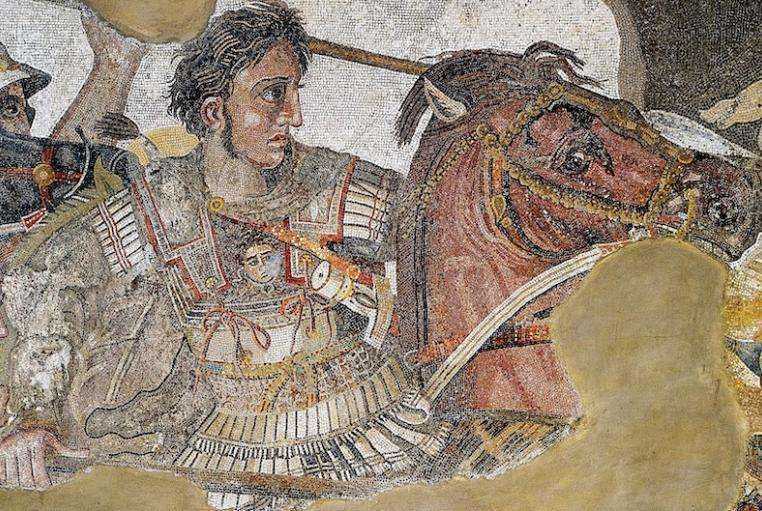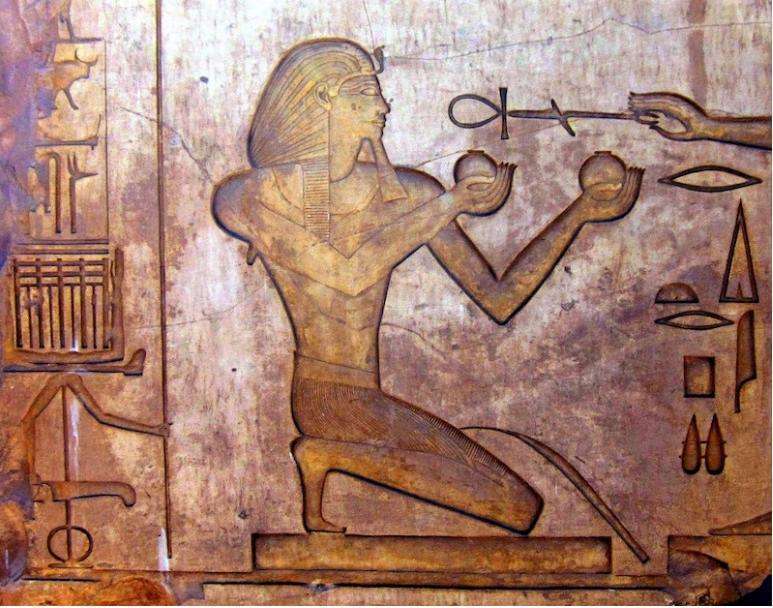The graves of people who played important roles in the past, if found, can tell us much more about them and their culture.
In the vast fabric of the past, countless people have come and gone and left behind many stories. Yet, despite all our technological advances, there are still obscure episodes that continue to capture the imagination of archaeologists and archaeology enthusiasts alike. Among them are the lost tombs, the final resting places of legendary figures, famous leaders and famous warriors who somehow escaped discovery despite their lifetime of prominence.
The skeletal remains that can be found in lost graves can reveal everything from injuries, diet and diseases to their origins, causes of death and ages. Grave goods can also provide clues about the culture in which they lived.
Here are the 15 most famous lost tombs that archaeologists are still searching for.
1- Alexander the Great

Alexander the Great tops almost all lists of “lost” tombs. In 326 BC, this young king of Macedonia conquered much of the ancient world, from Greece and Egypt to present-day Afghanistan and northern India. He was about to conquer even more when he died in Babylon in 323 BC, possibly from malaria or typhoid or from drinking too much wine (some claim he was poisoned).
Alexander’s body was preserved in honey and transported to Egypt. He was buried in two tombs, first in Memphis, then twice in the city of Alexandria, which bears his name. But Alexandria was largely destroyed in the fourth and fifth centuries AD and archaeologists do not know where his body is.
2- Genghis Khan
When the Mongol leader Genghis Khan died in 1227 AD, aged about 67, he had built an empire stretching from what is now Ukraine to China. His death was attributed to disease, hunting injuries or warfare; some 75 years later, the Italian traveler Marco Polo reported that Genghis Khan died from an infected arrow wound during the campaign. Polo also claimed that more than 20,000 people who knew the location of the tomb were killed to keep it secret. Archaeologists now think the tomb may be somewhere in the Ordos region of northern China.
3- Cleopatra and Mark Antony
Cleopatra VII Philopator was the last queen of Egypt and lover of the Roman general Marcus Antony, a close friend and aide to Julius Caesar. After Caesar’s assassination, Antony allied himself with Caesar’s heir Octavianus, but later rebelled against him and apparently wanted to keep Egypt and the eastern regions of Rome for himself and his heirs.
However, Antony and Cleopatra lost the decisive Battle of Actium against Octavian’s forces in 31 BC and Cleopatra faced the loss of her kingdom – whereupon she died in Alexandria in 30 BC after deliberately having herself bitten by a deadly snake. Antony, meanwhile, is said to have killed himself with his sword after hearing of Cleopatra’s death. It is thought they may have been buried together, but their whereabouts are unknown.
4- Hun Emperor Attila the Hun
Attila was the leader of the Huns, a nomadic pagan people who invaded eastern and central Europe in the fifth century AD and formed the powerful Hun Empire with allied groups of Goths, Alans and Bulgars.
Attila was one of the most feared enemies of both the Eastern and Western Roman Empire after the start of his rule in 434 AD, but he reportedly died on his wedding night in 453, at the age of about 47. Reports say he suffered severe bleeding during the festivities, and there is speculation that he may have been poisoned by his new wife Ildico, whose name hints at Gothic origins. Attila is thought to have been buried among valuable artifacts somewhere in Hungary, but the servants who buried him are said to have been killed to keep the location of the grave secret.
5- Khufu
The ancient Egyptians are famous for their elaborate royal tombs and many of their lost tombs are on this list. However, the tomb of one of the oldest Egyptian kings is not lost for sure. For this is the Great Pyramid of Giza, which dominates the landscape near Cairo to this day. But the chamber in that vast pyramid where Khufu’s body was buried has never been found, even though many of the buried passages and chambers there have been discovered.
Khufu, also known as Keops, ruled Egypt from 2551 BC to 2528 BC. Recent scans using cosmic rays have revealed a hidden tunnel inside the pyramid, but so far there is no evidence that this could lead to a secret burial chamber.
6- Amenhotep I
Amenhotep I was pharaoh of ancient Egypt from about 1525 BC to 1504 BC. His mummy was found in the 19th century in a tomb near the modern Egyptian city of Luxor, where he was hidden to protect him from grave robbers, but his royal tomb was never discovered.
Amenhotep I seems to have been a powerful pharaoh who rebuilt many temples in Egypt and tried to spread Egyptian control to foreign lands. He was very popular among later Egyptians as a historical figure and a funeral cult was established in his honor.
7- Thutmose II

Thutmose II was pharaoh from 1492 BC to 1479 BC. His mummy was in the same tomb collection as that of Amenhotep I, but his tomb was never found. Thutmose II is known as the husband (and half-brother) of Queen Hatshepsut, who after his death became pharaoh and a powerful ruler in her own right.
8- Nefertiti
Nefertiti was famous in antiquity as the queen of Egypt, and became even more famous in 1912 when a painted wooden head, presumed to be a model for stone statues, was found among the ruins of an ancient Egyptian workshop.
Nefertiti lived from 1370 BC to 1330 BC and was the wife of pharaoh Akhenaten, a reformer king who introduced a form of monotheism to Egypt under the name of sun worship, which he called Aten. Akhenaten also emphasized royalty, and many carvings show him with Nefertiti, who some think was a kind of co-ruler. Despite recent claims, Nefertiti’s royal tomb and mummy have never been found.
9- Akhenaten
Pharaoh Akhenaten’s royal tomb has never been found, but some Egyptologists suggest that his reburied mummy was discovered in the early 20th century.
Akhenaten was a controversial figure whose original name was Amenhotep IV in honor of the Egyptian sun god Amun. Only after becoming pharaoh did he change his name to Akhenaten in honor of the new sun god Aten. Akhenaten’s religious reforms did not survive long in his reign from 1349 BC to 1336 BC. However, his son Tutankhamun restored the worship of the ancient Egyptian gods.
10- Ankhesenamun
Ankhesenamun, who lived from about 1348 BC to 1322 BC, was the half-sister and wife of Tutankhamun. She was also the daughter of Nefertiti and Akhenaten.
Her tomb may be in the Valley of the Kings near Tutankhamun’s tomb, but has not yet been discovered. As the daughter of one pharaoh and wife of another, her tomb is expected to be ostentatious if found.
11- Ramses VIII
Ramses VIII was a pharaoh who ruled for less than a year between 1129 BC and 1126 BC. We know very little about the details of his life and it is not known how old he was when he became pharaoh or why he died. What is known, however, is that this was a troubled time for the Egyptian royal family, so there may have been a dispute over succession.
Ramses VIII was the son of the powerful pharaoh Ramses III and succeeded his half-nephew Ramses VII, whose father was Ramses VI. He is the only king of the dynasty whose tomb has not yet been discovered.
12- Boudica
Boudica was the queen of the Iceni tribe who lived in Norfolk in what is now eastern England. In 60 AD, she led a bloody revolt against the Roman rulers of Britain, who had invaded in 43 AD.
The revolt was sparked by the death of Boudica’s husband, the king of the Iceni; the Romans then claimed to be the sole heirs to the Iceni kingdom. Boudica, however, felt that her daughters should receive at least half of the inheritance (the Romans may not have accepted this claim because they were women).
Instead of negotiating, the Romans ordered Boudica to be beaten and her daughters raped, and then Boudica started her rebellion. Several other British tribes joined them and eventually the rebellion was crushed by the Romans. Boudica died in 61 AD after her last battle against the Romans, probably after drinking poison to avoid capture. Her grave is said to be in the Hampstead area of London, or possibly under a train platform at King’s Cross station in London.
13- Montezuma II
Montezuma II was one of the last Aztec emperors in central Mexico before the Spanish invader Hernán Cortés occupied the region. (Two other Aztec emperors ascended to the throne before the Spanish occupation was complete, but both lasted only a few months.)
Montezuma II hoped to appease the invading Spaniards and tried to buy them off with gold. There are different accounts of his death in 1520: Either he was betrayed by the Spanish or, according to Spanish records, mortally wounded by his own people in retaliation. According to some sources, his body was cremated a few days later – but his remains have never been found.
14- Atahualpa
A fate similar to Montezuma’s befell the last Inca emperor, Atahualpa, who was captured in 1533 by Spanish invaders under Francisco Pizarro on his way to Cuzco, Peru. Atahualpa offered to ransom himself by filling one room with gold and two more with silver, but after most of the treasure arrived, Pizarro ordered Atahualpa’s execution anyway.
He is claimed to have been given a Christian burial, but several records suggest that his body was later exhumed by his followers. His whereabouts today are unknown.
15- Christopher Columbus
The whereabouts of the remains of Christopher Columbus, the Genoese explorer who first crossed the Atlantic and paved the way for European colonization of the Americas, are still disputed. After Columbus’ death in 1506, his body was buried in Valladolid, Spain. But he was exhumed and reburied – first in Seville, Spain, and later in Santo Domingo, the capital of the Dominican Republic. Both Santo Domingo and Seville now claim to have Columbus’ bones, and no one knows who is right.
